Are you wondering how to afford a horse? If you are involved with horses, you know they are not cheap.
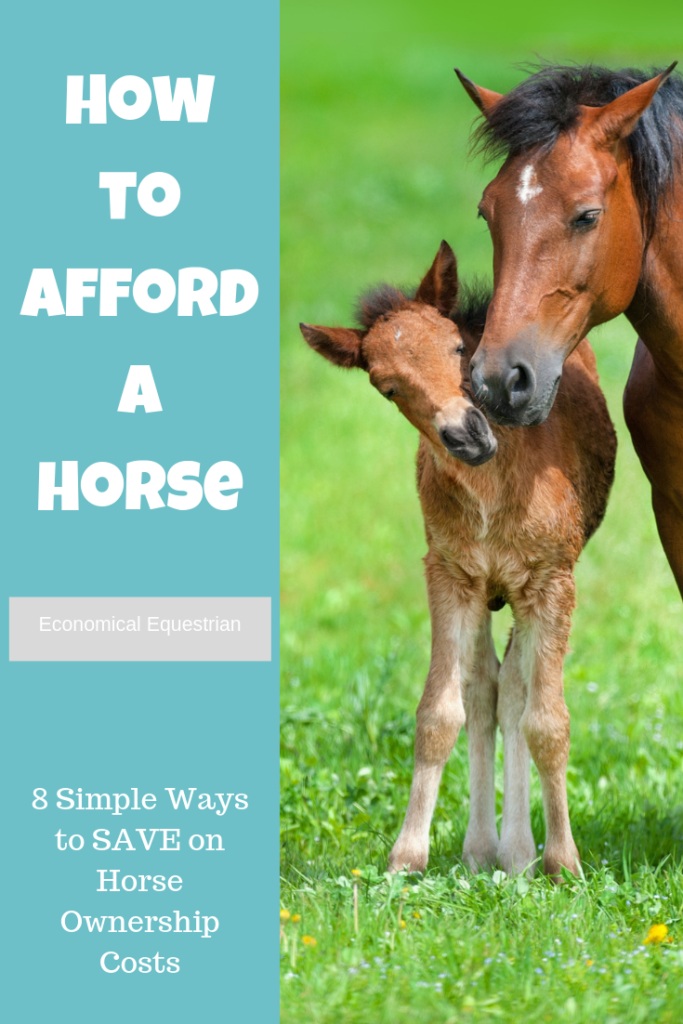
Thankfully we love them, so most of us work hard to make sure our horses are comfortable and happy. But figuring out how to afford a horse can become difficult if finances are tight.
Related Post: Equestrian Side Hustles – Make extra money to help afford your horse!
There are quite a few simple ways you can save money on horse ownership. Check out these 8 Ways to help you with how to afford a horse.
Related Post: Need more time with your horse? Check out these Time Saving Tips for Equestrians.
1. Buy the Best Quality Hay you can Find
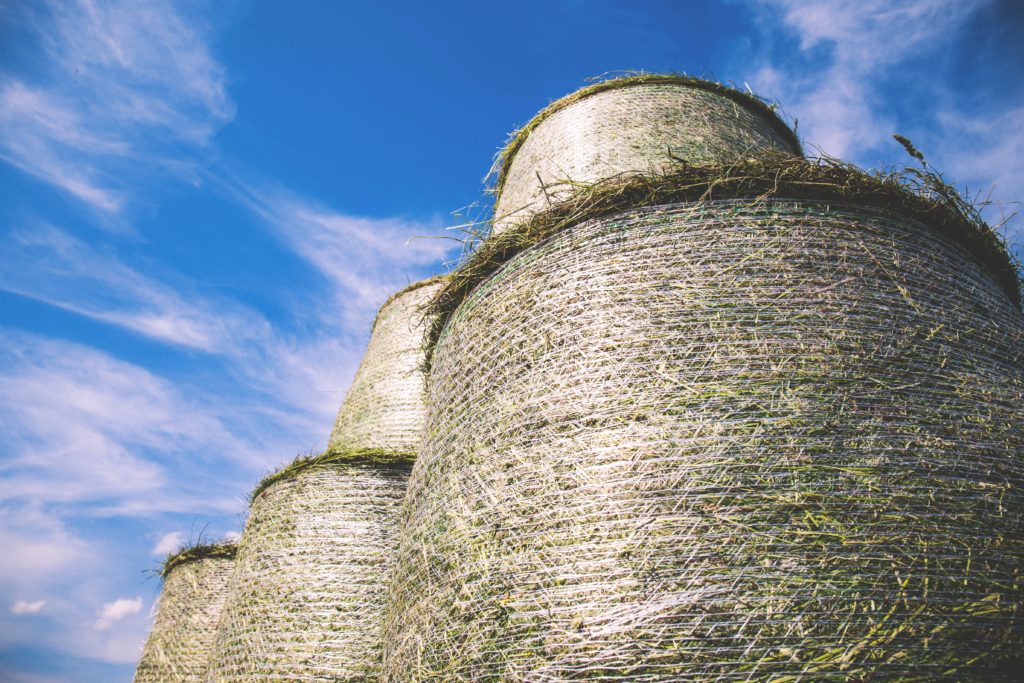
This may seem counter-intuitive because the best hay is probably more expensive, BUT the better quality hay you have, the healthier your horse can be.
If your forage is high quality, you typically don’t need to feed as much and high quality hay also keeps your horse healthier, ie hopefully less vet bills.

2. Reduce your boarding expenses

Boarding a horse can be really expensive! Board ranges from $100-$1,000 (or more) a month! There are several ways to reduce your monthly board costs.
You could try “rough board”. Rough board is when you provide some or all of the care for your horse. It can be more work, but less expensive. If you already have friends at the barn, you can combine forces to make it easier on each other. Then you also have someone to care for your horse if you go out of town.
You can also reduce board expenses by assisting with the care of your horse or other boarded horses. Consider cleaning stalls in exchange for money off your board, or exercising horses to reduce your boarding costs.
3. Check your Supplements
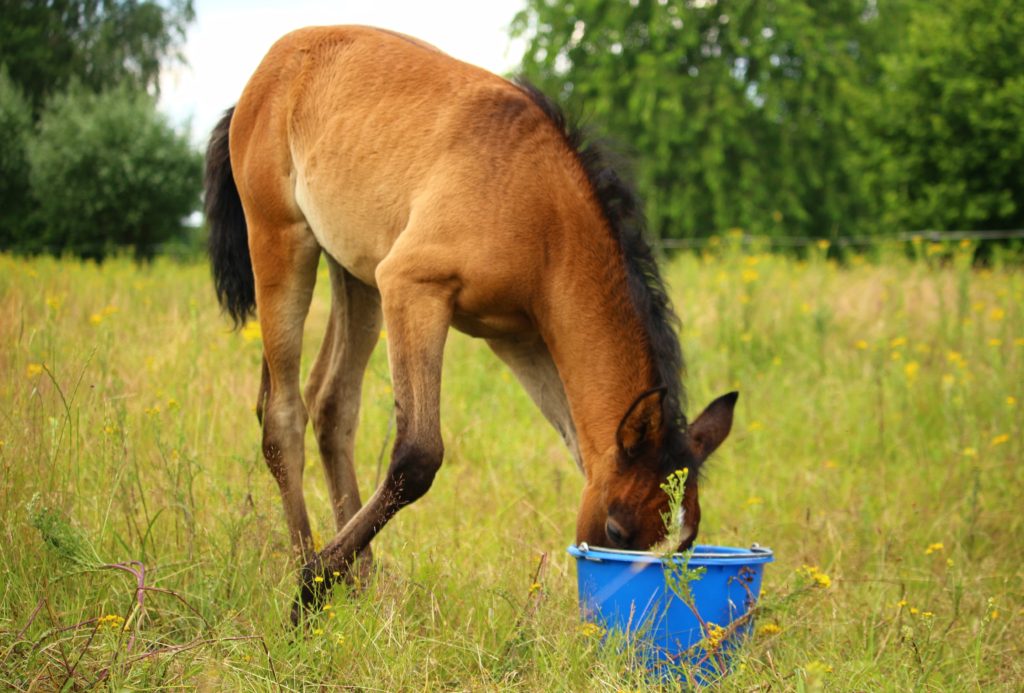
Reduce the number of supplements you buy and feed your horse. Has the vet recommended a supplement, or are you just feeding it “just because”? (ie It had good marketing).
Supplements are heavily advertised to horse owners making us believe we “need” all of the newest supplements. Consider the WHY behind why you are feeding a supplement and consult your vet and/or an equine nutritionist to determine what your horse actually needs.
4. Buy in Bulk Whenever Possible

There are many things that you can buy in bulk. Whenever possible, see how much you can save by buying more at a time!
- Shavings. Some lumber mills allow you to fill your own bags of shavings or your horse trailer. This can be much cheaper than buying bags of shavings. Ask your farm supply store if they will give a discount for a larger quantity of bagged shavings, if that is your only option. Oftentimes, there is a discount for purchasing a pallet of something.
- Hay. Buy your hay right after it is cut when supply is at it’s highest (if you have space to store it for the year). You’ll pay less and be set for the year. Hay prices typically go up during drought or the winter when supply is lower and demand is higher.
- Fly Spray and grooming supplies. Coat sprays, fly spray, shampoo, conditioner, etc is much cheaper when purchased in gallons versus small bottles. Keep your smaller bottles and refill as needed.
- Supplements. Supplements have a large price range but you can save quite a bit by buying them in bulk. Smartpaks are convenient and easy to use, but vary in affordability. Sometimes the supplements in Smartpaks are cheaper than in bulk. Shop around and find the best deal for price per ounce. Many online retailers will offer sales and specials throughout the year so check for the best price per ounce of the supplements you need.
- Grain. Grain is typically cheaper if you buy it in bulk as well. A pallet’s worth of grain will reduce the price by 5-10% (according to my feed store). Or buy grain when it goes on sale. There are promotions a few times a year for buy 3 get 1 free at my local feed store.
5. Provide Care and Maintenance for your Horse
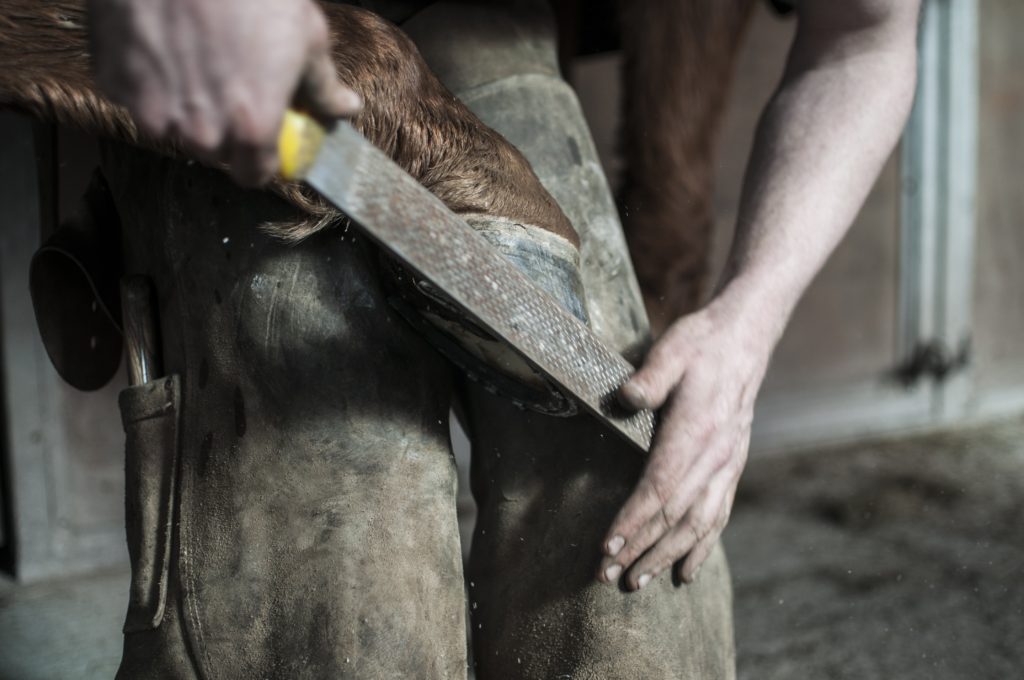
There are quite a few regular maintenance and care for your horse that you can do for yourself to save money.
Worm your horse yourself (I didn’t even know that some people don’t worm their horses themselves!) You should also consider performing fecal tests on your horse to make sure you are spending your money correctly on the type of wormer, or not worming if it is not necessary.
If you are willing to learn (and be humbled by how much you need to learn), you can take courses or certifications to trim your own horse’s feet. If you have multiple horses, this could mean a huge savings! Even if your horse just needs trims, this can save you several hundred dollars a year. However, do not DIY your farrier care if you don’t know what you’re doing.
Regular vet care like worming, and possibly vaccinations could be administered yourself if you are experienced and comfortable. Just don’t sacrifice your horse’s health for saving a few bucks. If you have questions or think your horse needs a vet, call a vet!
Keep your horse groomed, their feet picked out, their feeder clean, etc. This type of regular maintenance will alert you to problems that could cause bigger issues in your horse’s health and wellness.
6. Reduce your Training or Lesson Costs

Training for horse and rider can quickly add up to the high costs of owning a horse. Reducing the frequency or cost of training can help you afford a horse. If you take a lesson every week, consider every other. You and your horse can still make progress with a little more “homework” between lessons. Or you could take a group lesson instead of private – it will cost you quite a bit less.
Trying to reduce training expenses? Ask if you can watch the trainer and how they ride your horse so you know how and what they are doing. If you can learn how to do the same thing your horse trainer is doing, you could save a lot of money on training expenses.
7. Buy Used when Possible
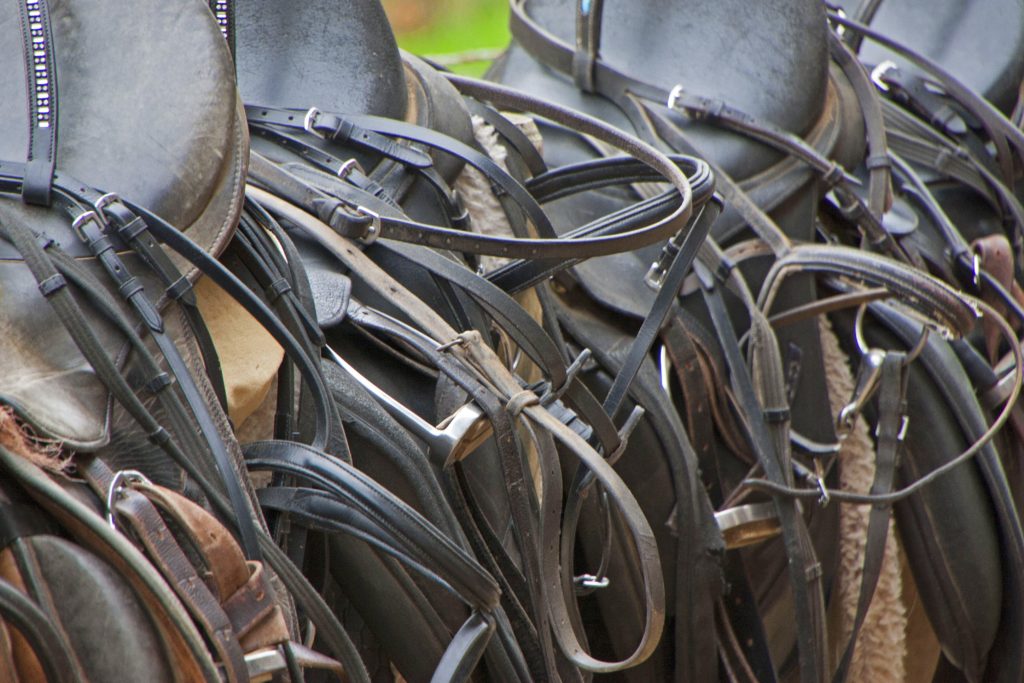
Used tack such as saddles, bridles, show clothing, blankets, etc are much cheaper when you buy used. You can sometimes find really great deals on new tack that someone bought and never used. Check Ebay for current prices as well as see how much items sold for. This should give you an idea of how much you should spend on something. Ebay has all kinds of used horse tack for sale at a fraction of the cost to buy new.
Some other places to find used tack and horse equipment:
- CraigsList
- TackTrader
- Facebook MarketPlace or Facebook Groups
- Equine Now
- Horse Clicks
- Consignment Tack Stores in your area
*Do not buy a used helmet! If a helmet has been in a fall it may not be safe for preventing injury if you were to fall. Always buy your helmet new from a reputable store.
8. Repair Instead of Buying New
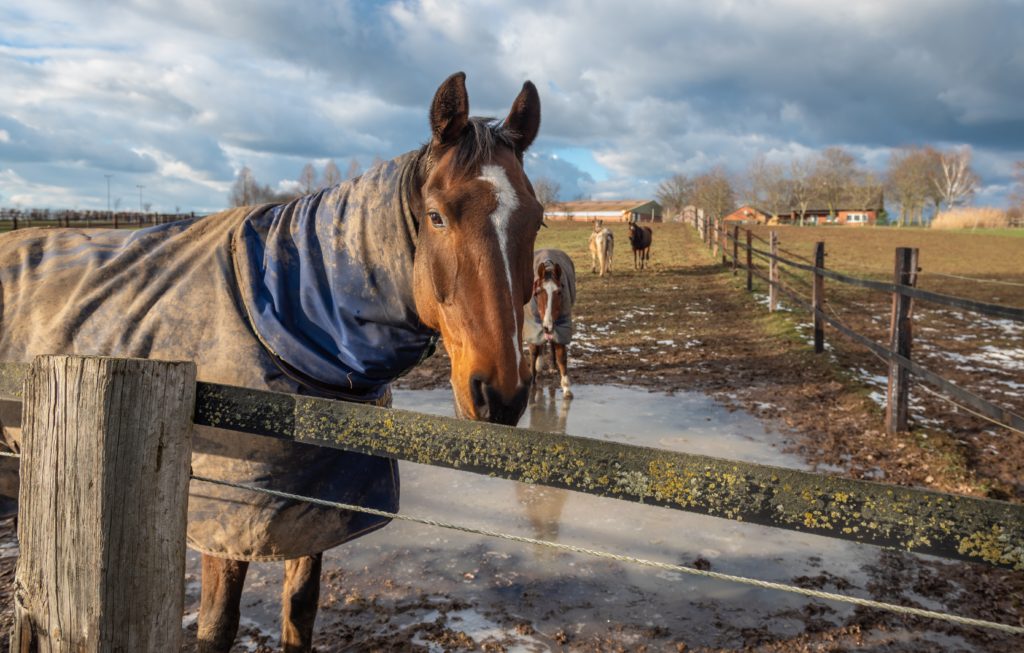
Repair broken tack, blankets and other supplies (as long as it does not compromise safety!)
Instead of buying new blankets, wash and repair them yourself. Find a store near you that will wash and repair them for a fraction of the cost of buying new. (Or if it is allowed in your household, you can wash them at home too). Before you give up on a used blanket, try washing and re-waterproofing it.
Leather goods such as halters can easily be stitched back together if they are broken.
You can re-sole your riding boots for a small price compared to buying new boots.
Do you already use some of these methods to save money on horse ownership? Do you have any other methods for how to afford a horse?
Although horses are expensive, there are quite a few ways that we can reduce their cost. You may be thinking that such small changes in spending or care habits won’t make a difference, but every little bit adds up to changing your finances.
Affording a horse may seem like a luxury, but to quite a few of us, horses are a necessity. Implement some of these methods to help with how to afford a horse more easily.
Leave a Reply